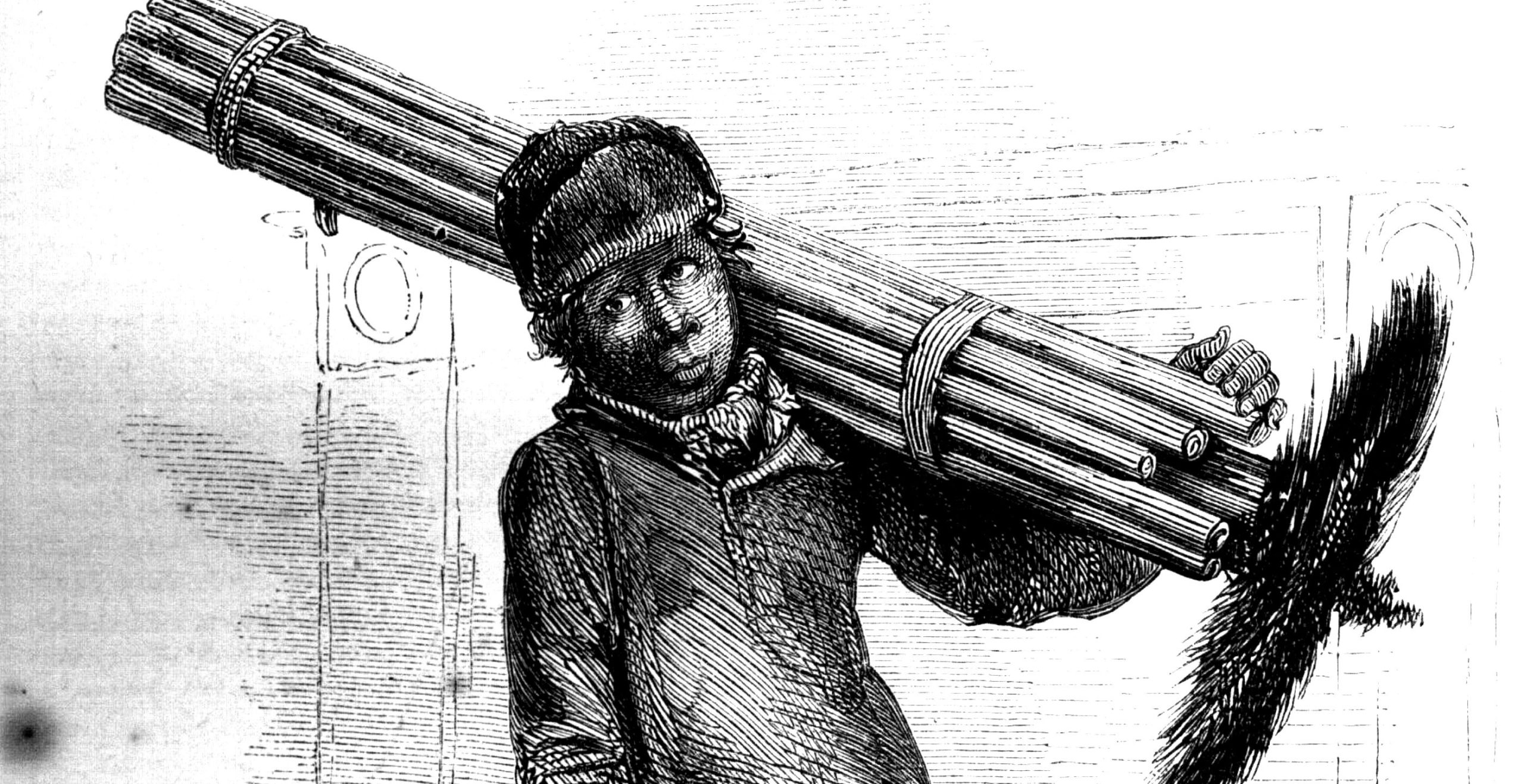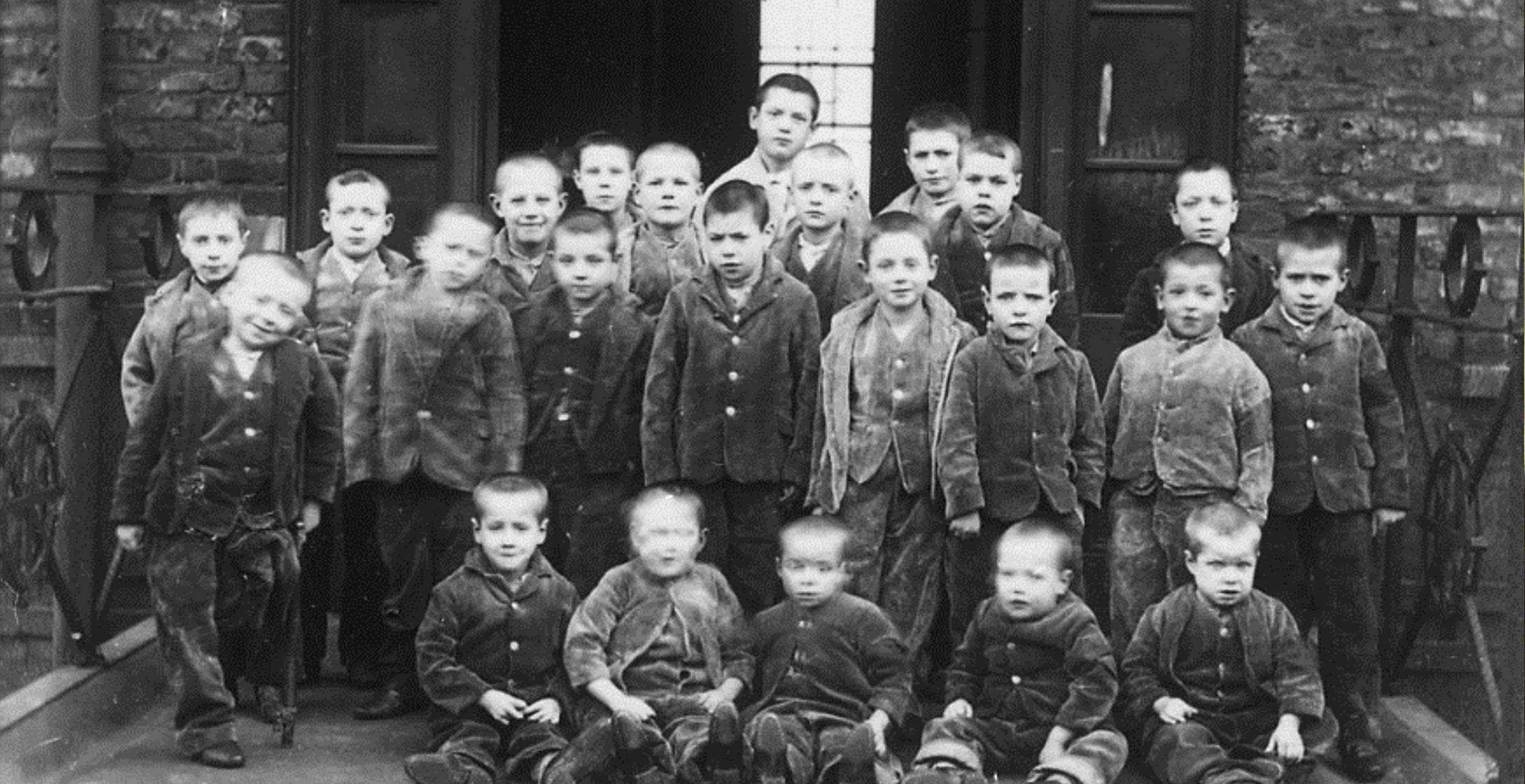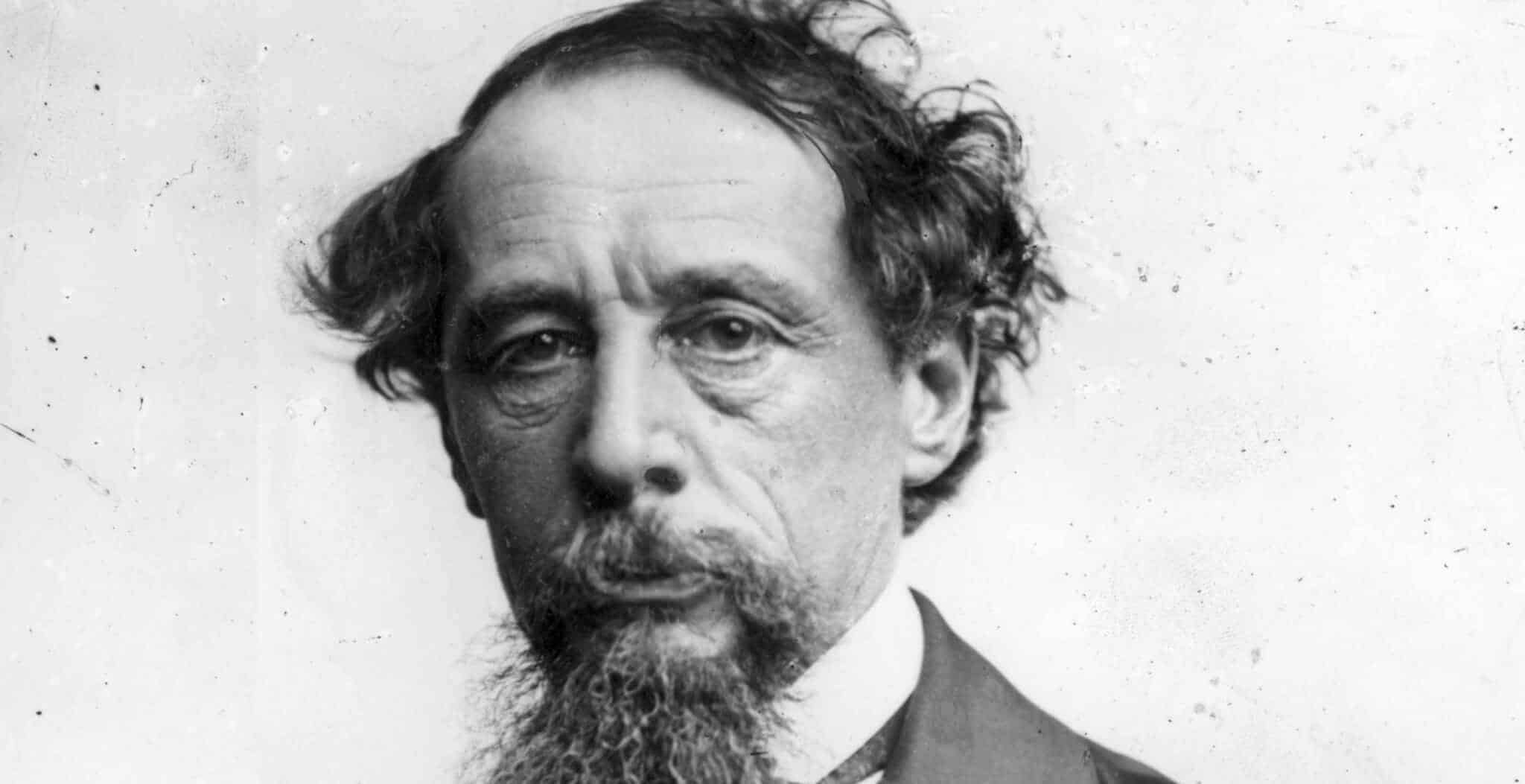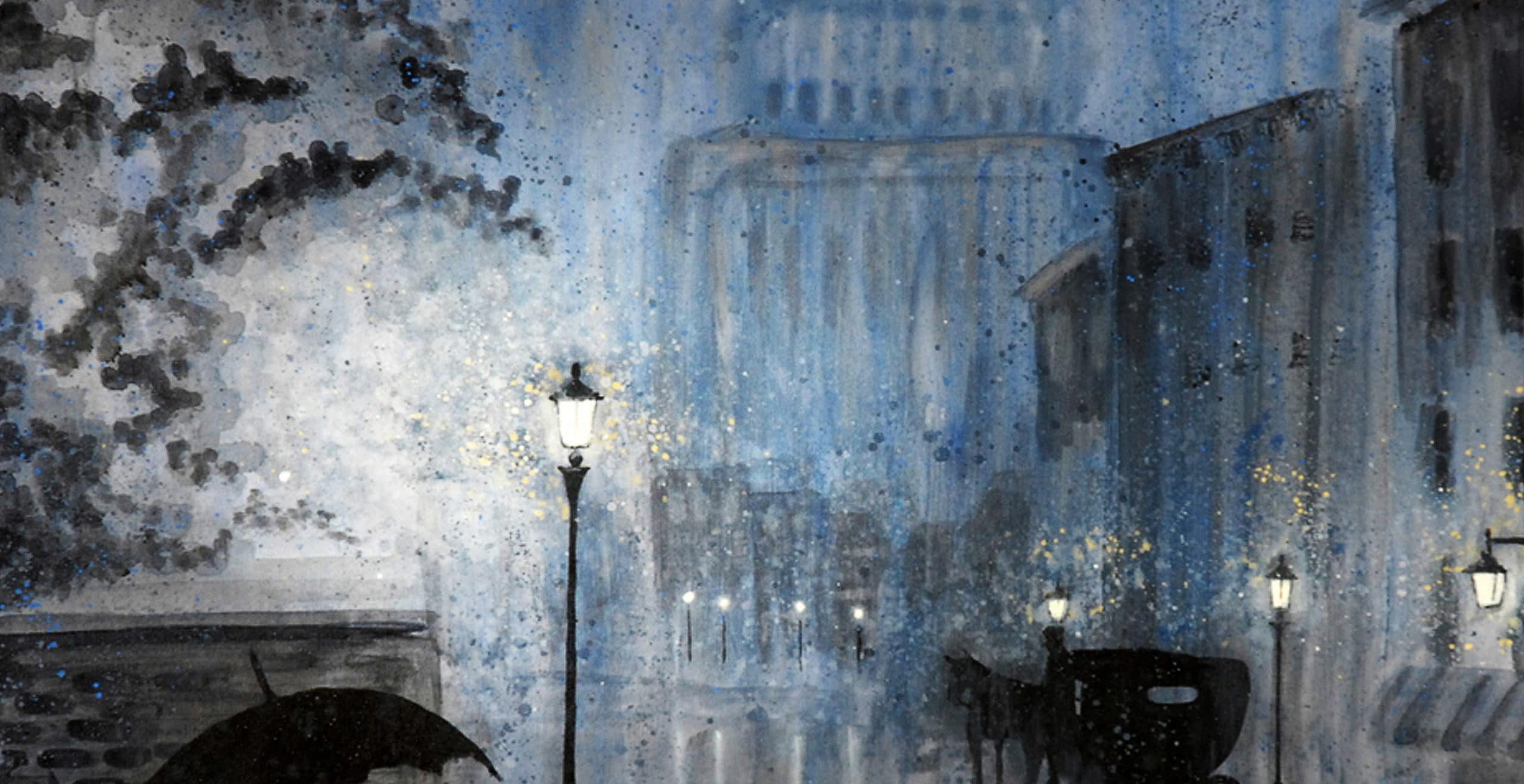The chimney sweep, or climbing boys as they were often called, was a harsh profession to be in and most likely one that would severely cut your life short.
Those employed were often orphans or from impoverished backgrounds, sold into the job by their parents.
With young boys employed to work in extremely dangerous conditions, some as young as three, the practise was remarkably widespread and socially acceptable for quite some time.
In the late 1780’s, the famous poet William Blake published the first part of his poem in the ‘Songs of Innocence’ entitled, “The Chimney Sweep”, perfectly encapsulating the sad tale of child labour replicated across the country in the age when Britain rose in strength as an industrial powerhouse.
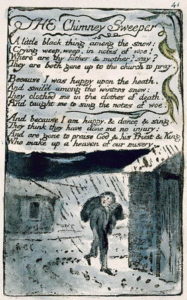 From “The Chimney Sweeper” by William Blake, from his work “Songs of Innocence and of Experience”, 1795
From “The Chimney Sweeper” by William Blake, from his work “Songs of Innocence and of Experience”, 1795
Children were used for chimney sweeping due to their diminutive size that enabled them to fit into the very narrow and enclosed spaces that required cleaning inaccessible to an adult. With some as young as four or five perhaps not quite strong enough, six years of age was often the time considered most appropriate to enter the profession.
With climbing boys, and sometimes girls too, reliant on the so-called master sweep for employment, clothing and food, the young children were referred to as a kind of apprentice, learning the craft as it were whilst the adult sweep had complete control over their lives.
Very often those that had been sold by their parents had even signed papers securing the master sweeps status as their legal guardians, meaning these young children were tied to their master and their profession until adulthood with no route to escape.
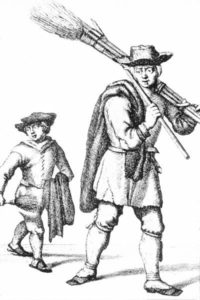
The master sweep meanwhile would often be paid by the local parish to take on these waifs and strays and teach them the trade. As such, the Poor Law guardians were required to make sure as many children from the workhouses as possible would be forced into apprenticeships whilst the master sweep taught them on the job, gave a set of clothes and had each child cleaned once a week.
The only option available to the child apprentice was to eventually climb through the ranks. After working for seven years they could go on to become a journeyman sweep and eventually perhaps become a master sweep themselves.
By the eighteenth century the use of child chimney sweeps was commonplace, however the use of the chimney in Britain dates back much further. As far back as 1200 the construction of the chimney began to replace the previous reliance on an open fire.
Over the coming centuries, the use of different natural resources required further adaptations as the transition from wood to coal meant that the chimney was now thick with soot and it became an increasingly prominent feature of every building.
By the turn of the seventeenth century, new legislation brought in a hearth tax, measured by the amount of chimneys in a building. It was at this point that many buildings were constructed with labyrinths of interconnected flues as a way of navigating the extra cost.
The much narrower and compact design that resulted mean adult sweeps were far too large to fit into such confined spaces.
Moreover, with an ever increasing urban population drawn to the large towns and cities for work, the use of chimneys and thus the necessity of a chimney sweep meant the job was in more demand than ever.
This understandably created a logistical problem as the deposits from the soot required constant cleaning but the space in which to do so was hardly navigable. Chimneys were becoming increasingly narrow and connected together through series of flues making awkward angles practically impassable.
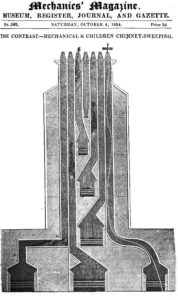 Cross-section of a seven-flue stack in a four-story house with cellars. An 1834 illustration from Mechanics’ Magazine.
Cross-section of a seven-flue stack in a four-story house with cellars. An 1834 illustration from Mechanics’ Magazine.
Thus, the climbing boys became an essential part of mainstream life, providing a much needed service to buildings across the country.
Whilst there were of course variations between buildings, a standard flue would narrow to around 9 by 9 inches. With such a miniscule amount of movement afforded in such a small space, many of the climbing boys would have to “buff it”, meaning climb up naked, using only knees and elbows to force themselves up.
The perils of the job were vast, allowing for the fact that many a chimney would still be very hot from a fire and with some still maybe on fire. The skin of the boys would be left stripped and raw from the friction whilst a less dexterous child could possibly have found themselves completely stuck.
The position of a child jammed in a chimney would have often resulted in their knees being locked under their chins with no room to unlock themselves from this contorted position. Some would find themselves stranded for hours whilst the lucky ones could be helped out with a rope. Those less fortunate would simply suffocate and die in the chimney forcing others to remove the bricks in order to dislodge the body. The verdict given by the coroner after the loss of a young life was “accidental death”.
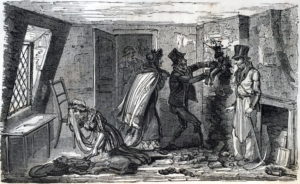 The death of two climbing boys in the flue of a chimney. Frontispiece to ‘England’s Climbing Boys’ by DR. George Phillips.
The death of two climbing boys in the flue of a chimney. Frontispiece to ‘England’s Climbing Boys’ by DR. George Phillips.
With such dire consequences, the stakes were high and the boys would need to be as strong and as agile as possible to survive.
With ages ranging from some as young as four up until puberty, the boys would suffer terrible health conditions as a result of the demands on their small not yet developed bodies. Some of these consequences included deformity of the bones or increased lung problems from an intense inhalation of soot meaning reaching adulthood and especially old age was unlikely.
Another common ailment was the effect of the soot on the eyes often leading to intense and painful inflammation made all the worst by the boys rubbing their eyes for relief. Sadly in some cases it would eventually lead to loss of sight.
Furthermore, the occupation itself led to the identification of one of the first industrial cancers, first reported by Sir Percival Pott. He described it as chimney sweeps carcinoma, commonly referred to as soot wart, viscously attacking the scrotum and affecting boys as they reached their teenage years.
With such tragic consequences being endured by the climbing boys, eventually there grew an increasingly large group of campaigners who shed light on the plight of these poor boys. One such person was Lord Shaftesbury, a philanthropist who dedicated himself to introducing legislation in order to tackle some of the most pressing social injustices of the day.
Moreover at this time, the conditions and lives of the children were explored in literature and popular culture, drawing much needed attention to a practise which had been accepted for far too long.
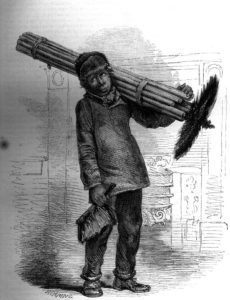
In time and after many challenges made by individuals to the government and authorities, the Chimney Sweepers Act was passed, enforcing years of previous legislation which had attempted to improve their living and working conditions. By September 1875 and with the assistance of Lord Shaftesbury, a bill was passed forcing sweeps to be licensed and registered with the police, thus enforcing supervision of the practices.
After several decades of pleas for reform falling on deaf ears and with little adherence to previous legislation aimed at implementing proper procedure and minimum age requirements, the 1875 act went some way into finding a solution to tackling the issue.
Thanks to the work of campaigners who presented their findings, and after countless lives had been lost or ruined by the use of child chimney sweeps, the practice was eventually halted, ending the barbarity of climbing boys and the mainstream acceptance of neglect, abuse and forced labour.
Nevertheless, the cultural impact of the practice can still be observed today as a Sweeps Festival held in Rochester, Kent is celebrated with fancy dress and costumes. Moreover, in Britain it is still considered lucky for a budding bride to glimpse a sight of a chimney sweep.
Whilst the climbing boys had become such a prevalent sight in modern industrial Britain, their spectre lives on today through literature and cultural representations, perhaps giving a more light-hearted depiction of what was a sad and cruel reality of young children victimised by their poverty and trapped by their circumstances.
Jessica Brain is a freelance writer specialising in history. Based in Kent and a lover of all things historical.
Published: April 7, 2021.
